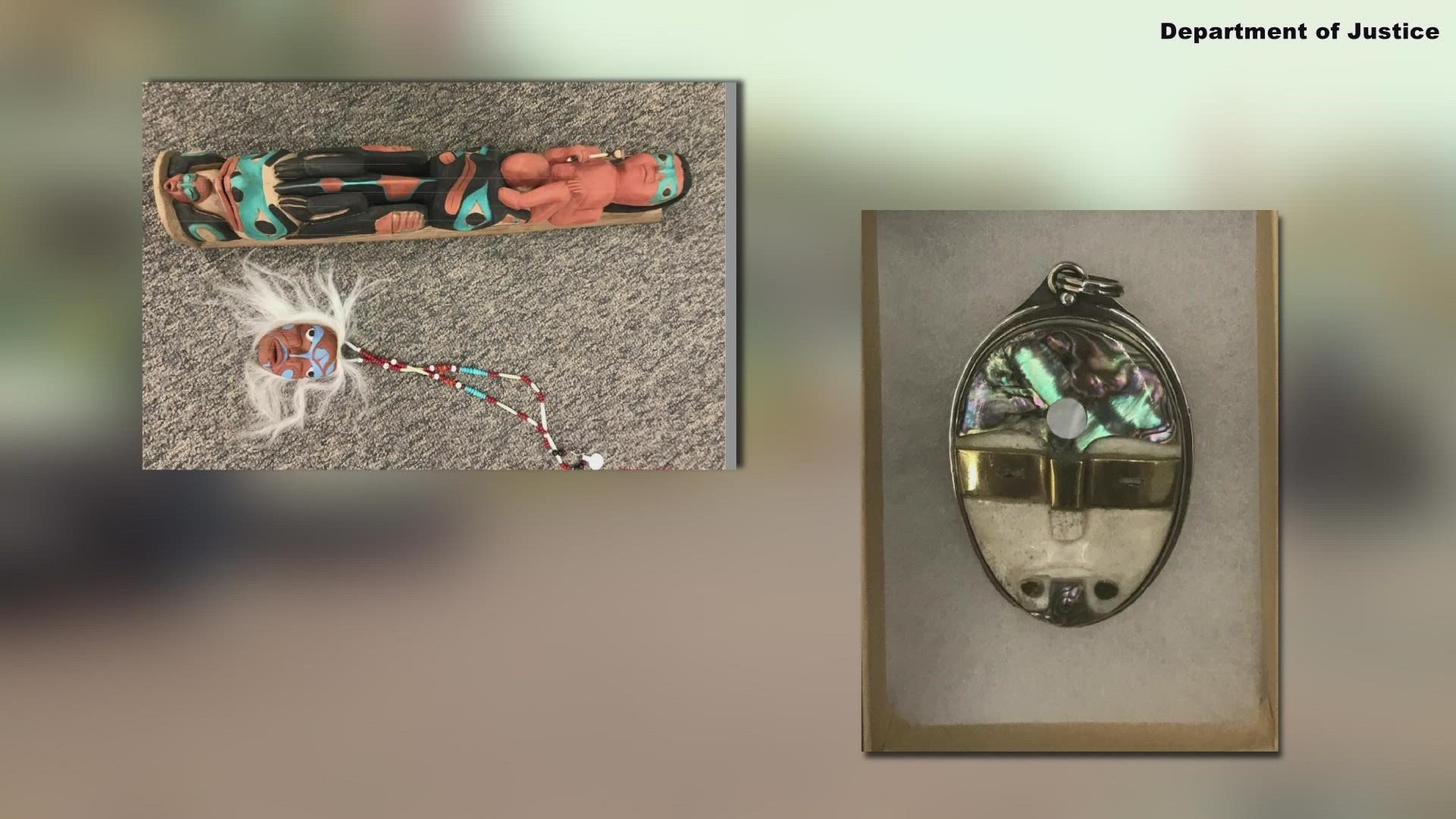SEATTLE — Two western Washington artists face up to five years in prison after being charged with pretending to be Native American carvers to sell goods at Pike Place Market in downtown Seattle.
The investigation into the two men, 67-year-old Jerry Chris Van Dyke (aka Jerry Witten) of Seattle and 52-year-old Lewis Anthony Rath of Maple Falls, began in early 2019, according to the U.S. Department of Justice.
In February 2019, the Indian Arts and Crafts Board, which helps American and Alaskan Natives through the expansion of the Indian arts and crafts market, received a complaint about Van Dyke representing himself as a Nez Perce Indian artist.
He is not an enrolled tribal member, according to the criminal complaint.
Investigators with the U.S. Fish and Wildlife Service then made undercover purchases at a gallery in Pike Place Market where Van Dyke’s pendants were being sold as Native American art.
Investigators questioned Van Dyke, who admitted to knowing about the Indian Arts and Crafts Act, which makes the misrepresentation of Native-produced goods illegal.
Van Dyke also admitted that he is not a tribal member.
Van Dyke had sold more than $1,000 in carved pendants through the Pike Place gallery, claiming the pendants were Native American artwork based on Aleut masks, according to the complaint.
Van Dyke was charged with two counts of misrepresenting Native goods.
Then in May 2019, another complaint to the Indian Arts and Crafts Board led investigators to Rath, who was falsely claiming to be a member of the San Carlos Apache Tribe.
Undercover agents purchased a carved totem pole and necklace from Rath at the same Pike Place Market galley for more than $1,300. Another shop on the waterfront sold agents another carved totem pole and a mask.
At both stores, Rath’s artwork was falsely advertised as Native produced with biographies of Rath saying he is Native American.
Additionally, internet sites that Rath used to sell his artwork also falsely claimed that he is a member of the San Carlos Apache Tribe.
A search of Rath’s home and studio found that he was also in possession of feathers from protected birds including golden eagles, hawks and jays.
Rath is being charged with four counts of misrepresenting Native goods and two misdemeanor counts for possessing feathers from protected birds.
“By flooding the market with counterfeit Native American art and craftwork, these crimes cheat the consumer, undermine the economic livelihood of Native American artists, and impairs Indian culture,” Assistant Director of the Fish and Wildlife Service’s Office of Law Enforcement Edward Grace said.
Misrepresenting Native goods is punishable by up to five years in prison. Rath’s misdemeanor counts could result in up to a year in prison.
Matthew Steinbrueck owns Raven’s Nest Treasures in Pike Place Market. For the past 30 years he’s bought and sold Native America artwork, including buying pieces from the two men who are now facing federal charges.
“These guys are just, they’re small fry that are just trying to survive. I’m not saying they didn’t represent themselves, apparently they did, but there is no way for me to know that,” Steinbrueck said.
Steinbrueck is not being charged by the Department of Justice.
“They weren’t completely honest with me. I should have been more insistent on that … ” Steinbrueck said.
Lawyer Gabe Galanda focuses his practices on Indigenous Rights and says this is an issue that Native American artist have faced for a century while charges at any level are rare.
“It is a big deal when someone steps into that space occupies that space for indigenous peoples and then exploits that space,” Galanda said.
“It is immoral and unethical to hold yourself out as indigenous when you’re not. It is not necessarily illegal. It is, however, illegal to hold yourself out by way of your art as an Indigenous artist when you’re in fact not an Iindigenous artist or Indigenous person,” Galanda said.

